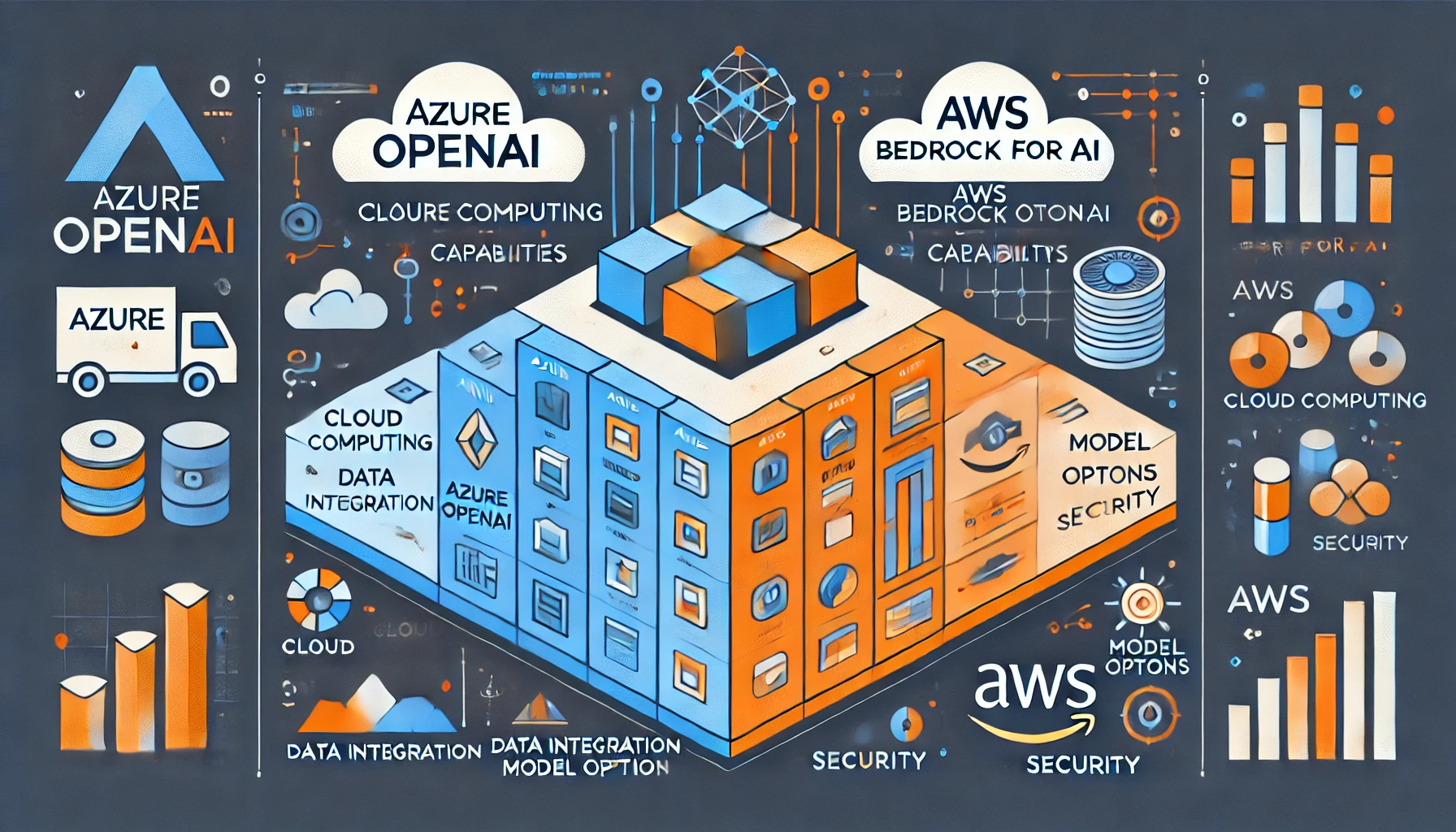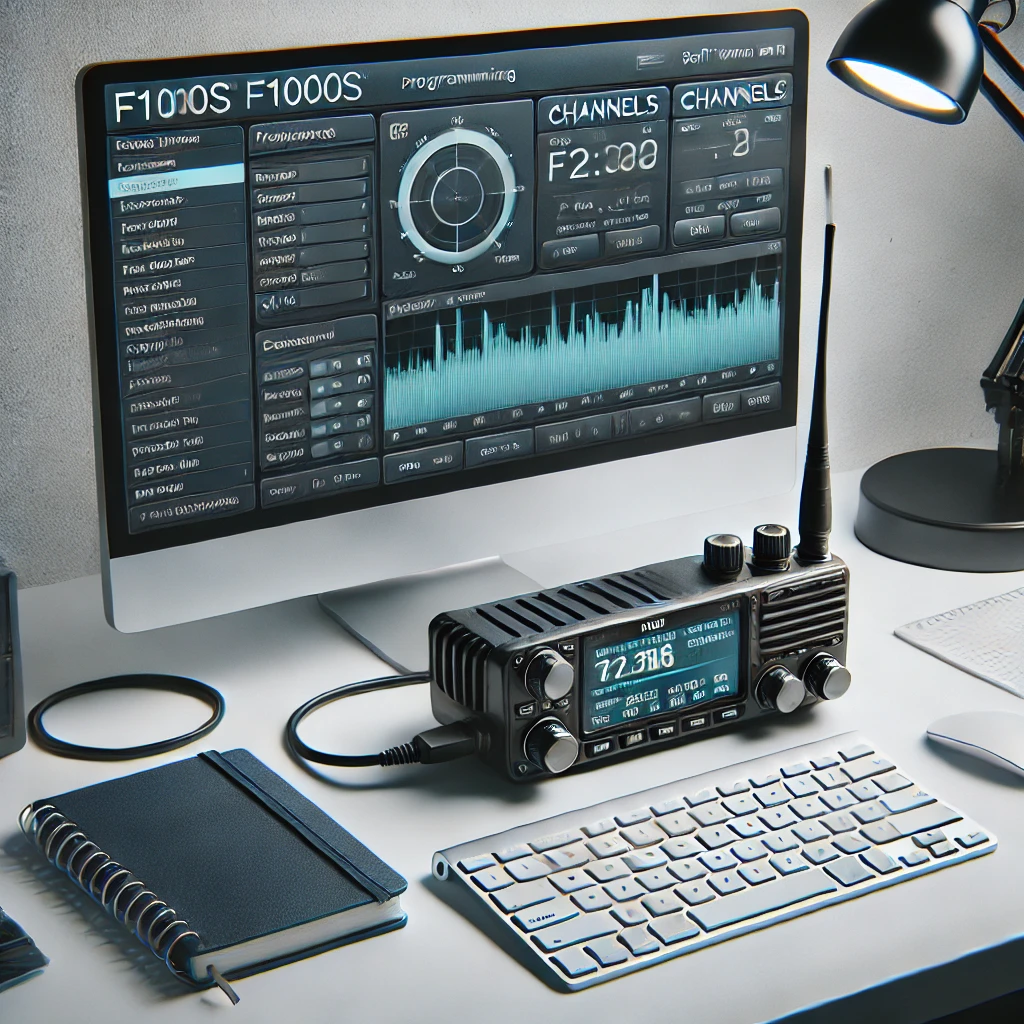Introduction
Artificial intelligence (AI) is transforming industries worldwide, and choosing the right platform is critical. Azure OpenAI and AWS Bedrock are powerful AI platforms offering distinct approaches, services, and models. This article will explore the differences, key features, and ideal use cases to help you decide which AI platform best meets your business needs.
Azure OpenAI vs AWS Bedrock
1. Understanding Azure OpenAI
Microsoft Azure OpenAI offers access to some of the most advanced language models available, including GPT-3, Codex, and DALL-E, allowing companies to integrate cutting-edge AI capabilities into their workflows. Built on Microsoft’s secure cloud infrastructure, Azure OpenAI combines AI advancements with robust data management and compliance features, making it an ideal choice for organizations prioritizing security and integration within the Azure ecosystem.
1.1. Language Models Offered
Azure OpenAI provides direct access to OpenAI models such as GPT-3, Codex, and the image generation model DALL-E. These models cater to various needs, from natural language processing to image generation and programming assistance. Users can fine-tune models for specific applications, which enhances model relevancy and effectiveness in specialized industries.
1.2. Integration with Azure Ecosystem
Azure OpenAI is embedded within the larger Azure ecosystem, integrating seamlessly with Microsoft’s productivity tools like Power BI, Azure Data Services, and Cognitive Services. This integration offers a cohesive and efficient experience for businesses already using Microsoft solutions. Leveraging existing infrastructure and workflows within Azure also reduces redundancy and facilitates streamlined data movement.
1.3. Security and Compliance
Security remains a high priority in Azure OpenAI, with Microsoft’s strict adherence to compliance standards like GDPR, HIPAA, and SOC. Azure’s security features include encrypted data storage, secure access controls, and identity protection. These safeguards make Azure OpenAI particularly appealing to industries like healthcare and finance, where data privacy and regulatory compliance are critical.
2. Overview of AWS Bedrock

AWS Bedrock, introduced as Amazon’s answer to generative AI needs, offers a broad selection of foundational models from third-party providers like Anthropic, Stability AI, and others. Known for its adaptability and scalable infrastructure, AWS Bedrock provides robust tools for prompt engineering, data integration, and enterprise-grade applications. It is optimized for users within the AWS ecosystem looking for extensive model choice and infrastructure flexibility.
2.1. Range of AI Models Supported
AWS Bedrock provides flexibility through its partnerships with various model providers, including Anthropic’s Claude and Stability AI’s image generation models. The range of models available on AWS Bedrock makes it adaptable for different applications, from text generation to complex image processing. This diversity gives businesses more options when choosing models tailored to specific industry needs.
2.2. Integration with AWS Ecosystem
AWS Bedrock is designed to integrate seamlessly with AWS services like SageMaker, Lambda, and S3, which are known for their scalability and support for big data applications. This integration allows users to manage large-scale AI projects with ease, making Bedrock an attractive option for companies already invested in AWS’s cloud services.
2.3. Security and Compliance in AWS
AWS is known for its robust security measures, including data encryption, secure access management, and compliance with numerous certifications such as GDPR, SOC, and HIPAA. AWS’s commitment to security ensures that sensitive data is protected throughout its lifecycle, making AWS Bedrock a viable option for companies with strict data governance needs.
3. Comparison of Key Features
3.1. Model Variety and Access
Azure OpenAI offers direct access to OpenAI’s advanced models, which are unmatched in natural language processing and generation capabilities. In contrast, AWS Bedrock supports multiple third-party models, allowing for greater flexibility and choice. Businesses needing specific OpenAI models may find Azure OpenAI superior, while those requiring model diversity may prefer AWS Bedrock.
3.2. Integration with Cloud Services
Both Azure OpenAI and AWS Bedrock provide excellent integration within their respective ecosystems. Azure OpenAI integrates with Microsoft tools, making it an excellent choice for businesses already using Azure services. Conversely, AWS Bedrock’s compatibility with AWS’s extensive suite of tools benefits users who require data scalability and flexibility.
3.3. Customization and Fine-Tuning
Azure OpenAI provides fine-tuning options that allow businesses to adapt models to specific needs. AWS Bedrock also offers fine-tuning features, particularly when working with SageMaker. Both platforms offer comparable customization options for highly specialized AI applications, although the specifics of the fine-tuning process vary depending on the model.
3.4. Performance and Scalability
AWS’s infrastructure is renowned for its scalability, accommodating heavy data loads and complex workflows. Azure OpenAI also offers excellent scalability, particularly for Microsoft-aligned businesses. Both platforms provide flexible computing resources, but AWS’s infrastructure may better handle extremely large or complex deployments.
3.5. Cost Comparison
Azure OpenAI and AWS Bedrock use different pricing models. Azure charges per-use based on compute time and resource needs, while AWS offers a pay-as-you-go model with options for reserved instances and data storage. Understanding these models and calculating potential hidden costs like data transfer and storage fees is essential for effective budget planning.
4. Pros and Cons of Azure OpenAI
Azure OpenAI’s primary advantages include access to exclusive OpenAI models and seamless Microsoft integration, which can reduce operational complexity for Azure users. However, its model options are limited to OpenAI’s offerings, which may not suit businesses needing broader AI model diversity.
5. Pros and Cons of AWS Bedrock
AWS Bedrock’s flexibility with multiple model providers is a significant advantage, allowing users to select the right model for specific tasks. However, licensing fees for certain models and potential infrastructure costs may add to the total expense, especially for high-compute applications.
6. Use Case Scenarios
Azure OpenAI is ideal for businesses in the finance, healthcare, and technology sectors that already rely on Microsoft’s tools and require advanced NLP capabilities. AWS Bedrock, on the other hand, is well-suited for industries needing a broader range of models and scalable infrastructure, such as e-commerce, entertainment, and logistics.
7. Customer Support and Documentation
Azure OpenAI provides comprehensive documentation, including user guides and API references, alongside Azure’s dedicated customer support. AWS Bedrock offers extensive support resources, including AWS’s training materials, SageMaker workshops, and on-demand assistance, making both platforms reliable for support needs.
8. Future Trends and Roadmap
Azure OpenAI may expand its model selection and enhance integrations with new Microsoft tools, while AWS Bedrock is likely to continue adding new model partnerships and improving scalability features. Monitoring these developments is crucial for businesses aiming to stay on the cutting edge of AI.
Conclusion
Azure OpenAI and AWS Bedrock each bring unique strengths to the AI landscape. Azure OpenAI excels for companies already embedded within Microsoft’s ecosystem, while AWS Bedrock provides flexibility and diversity in AI model options. Choosing the right provider will depend on your business’s specific needs, existing infrastructure, and AI application goals.
FAQs
1. What industries benefit most from Azure OpenAI?
Industries like finance, healthcare, and technology, which require advanced NLP capabilities and high security, benefit significantly from Azure OpenAI.
2. Is AWS Bedrock a good choice for small businesses?
Yes, AWS Bedrock can be beneficial for small businesses, especially those that need flexibility in model selection and scalability as they grow.
3. How does fine-tuning differ between Azure OpenAI and AWS Bedrock?
Azure OpenAI primarily focuses on tuning OpenAI’s models, while AWS Bedrock offers flexibility with multiple model providers, each with unique customization options.
4. What are the main security differences between Azure and AWS?
Both Azure and AWS have strict security protocols, but Azure integrates deeply with Microsoft’s identity management, whereas AWS emphasizes secure scaling.
5. Can both services work in a hybrid cloud setup?
Yes, both Azure OpenAI and AWS Bedrock can be configured for hybrid cloud environments, making them versatile for different deployment needs.











Leave a Reply